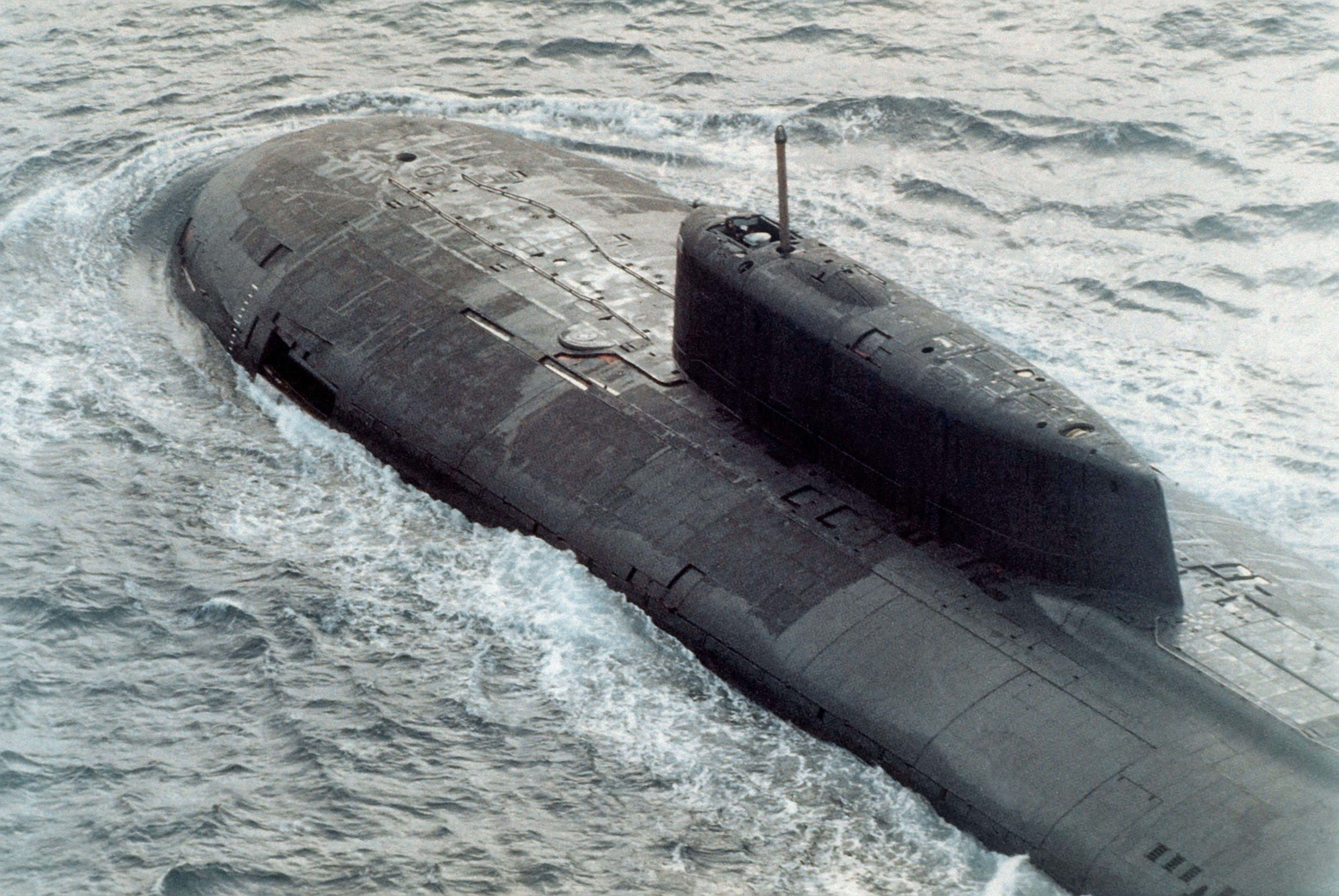
One person commented on this blog about the danger posed by Russian submarines. Probably a good time to look at what the threat is.
I did start my career in the U.S. defense industry working with submarine sonars and spectrum analyzers. This was back in the bad old days, when there were hundreds of subs out there. In our new found more peaceful world, there are a lot less.
Russian has around 56 submarines, according to Wikipedia. How many of these are fully operational is not something I know. Of those, 11 of them are boomers or ballistic missile submarines. These are submarines that carry nuclear missiles and would not be part of any fleet-on-fleet battle. They also list 6 “special-purpose submarines,” two are old converted attack submarines. The group of subs that threaten our control of the seas are 8 cruise missile submarines (SSGN) and 15 nuclear-powered attack submarines (SSNs). There are also 22 smaller diesel-power attack submarines. This is 45 or less operational subs to threaten our carrier fleets.
The biggest danger from Russian fleet is their 8 cruise missile submarines. These really are a threat to our carriers.
The United States has around 66 submarines. Of those, 14 are boomers.
Comparative Ship Count:
…………………………U.S……Size…………………….Russia…….Size
Aircraft Carriers………11…….100,000-106,300………..1….,…….58,600 tonnes
LHA/LHD……………….9……..41,150-45,693 tons (these are carriers !!!)
Battlecruisers………….0……………………………………2…………28,000 tons
Cruisers……………….22……..9,800 tons………………..3………….12,500 tons
Destroyers…………….69……..8,315-9,800…………….11…………7,570 – 7,940 tons
LCS…………………….20…….3,104-3,900 (“Littoral Combat Ships”)
Frigates…………………0…………………………………..10………….1,930 – 5,400 tons
Large Corvettes………………………………………………6………….2,200 tons
Corvettes……………………………………………………..76………..500 – 1050 tons
LPD…………………….11……25,300 (“Landing Platform Dock”)
LSD…………………….12…..15,939-16,100 (“Landing Ship Dock”)
LST (Landing Ship Tank)…………………………………..20…………..4,080 – 6,600 tons
Special-purpose………7…..895-23,000…………………18…………..500 – 23,780
Patrol Ships…………………………………………………..2…………..1,500
MCM……………………11……….1,312 tons (mine countermeasures)
PC………………………13………….331 tons (coastal patrol)
Large SSBN…………………………………………………..1………….48,000 tons
SSBNs………………..14……..18,750 tonnes……………10…………13,700 – 24,000 tons
SSGN…………………..4………18,750 tonnes…………….8………….19,400 tons
SSN……………………48…….6,927-12,139 tonnes…….15…………7,250 – 13,800 tons
SSK…………………….0……………………………………..22…………2,700 – 3,950 tons
Special purpose subs…………………………………………6………….600 – 18,200 tons
I did not bother to list landing craft (Russia has 37 of 555 tons or less), patrol boats (Russian has 37 of 139 tons or less), mine countermeasure vessels (Russian has 6 of 1,100 tons or less), auxiliaries (cargo ships, ice breakers, logistic vessels, salvage vessels, tugs, tankers, oilers, transports, etc.), LCCs (amphibious command ships), submarine tenders, maritime prepositioning ships (T-AK), the USS Pueblo, and the USS Constitution.
What is a ton:
Short ton (U.S.) = 2,000 pounds
Metric Tonne = 2,204.6 pounds
Long ton (UK) = 2,240 pounds

For all intents and purposes, all the Russian subs are cruise missile subs. As there has never been a successful system designed (the United States just abandoned its latest counter-torpedo system) against the wake homing torpedoes that the Soviets designed, it isn’t clear why the torpedo is given such short shrift.
Russian diesels are now very quite and are often very large. So their weapon count is often pretty high. The problem with trying to knock out a carrier is that they aren’t particularly fast. But if a carrier enters the area they are in, they can be very hard to detect. The diesel submarines are now becoming “air-independent” submarines. The Russian Lada class is one of this type, and is not entering service.
Add to this the various tests of super large nuclear torpedoes ( NATO code name KANYON) which seem to be a one-shot deal to knock out a US Carrier group, and you have a completely new system to deal with.
In the world of submarines, it is particularly hard to just count the numbers. The amount of recent technology innovations, with the use of commercially designed electronics for sensor arrays to speed up the design cycle, means that the whole area is in flux.
And given the problem of sunk-costs, sometimes when an area is in flux, it is the late arrivals that get the advantage.
I worked in the 1980s on submarine sonar systems, spectrum analyzers, MK-48 ADCAP torpedo and the Tomahawk Cruise Missiles. My “inside knowledge” is dated, but then so are some of their submarines. The Oscar II class is from 1980s, as are the Akula and Kilo classes and most of their other subs. There are not a lot of new subs (2?). I gather the new Yasen class SSN is an upgraded derivative from a design in the 1980s and there have been problems with the new Lada class SSK.
The problem with evaluating Russian military capabilities is that while their cutting edge and newest material are very much advanced, they make up a minority of their force.
Logic of all Russian Subs are cruise missile subs: SS-N-16 Stallion a name that is associated with a couple of similar types of weapon.
Interesting to note that the Iranians have a similar weapon system based on the Chinese C-704 for use with their submarines
https://www.popularmechanics.com/military/navy-ships/a26574258/iran-torpedo-missile-combination-jask-2/
The biggest problem lies in the limitation of ASW capabilities of US carrier groups. AIP equipped submarines have that demonstrated time and time again.
However, diesel subs pose a threat primary in littorial waters. Russia and China would engage US carrier groups far beyond that area with MRBMs which means that diesel subs would play a marginal role in combating carrier groups.
Regarding sunk costs: there is a growing concern in the military community that carriers would play the same role in a future conflict between peer to peer adversaries as did the battleship in WW2. The reason being missiles not subs.
Christopher just a small request, please use a true table when presenting those kinds of numbers. Be it on the emails or on the site they are very hard to interpret.
Surely you have such an option on the post structure options.
Cheers
Yea, I am not much of a graphics guy. I find it time consuming and boring. Not sure what is involved with creating charts and tables for this site, especially as it appears in multiple platforms. I set it up so it is readable on my computer screen but have no doubt that it is more difficult to read on some others. Sorry.